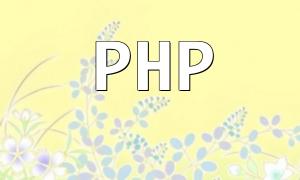In web development, JSON (JavaScript Object Notation) has become the standard data exchange format. In PHP, one of the most commonly used methods for handling JSON data is the `json_encode` function. This article provides a thorough explanation of PHP's `json_encode` function, including its parameters and usage, to help developers effectively utilize this tool for data encoding.
The `json_encode` function is used to convert PHP variables into JSON-formatted strings. It supports a variety of data types, including arrays and objects, making data transfer between frontend and backend more efficient and convenient.
The basic syntax of the `json_encode` function is as follows:
This parameter represents the value that needs to be encoded into JSON. It can be an array, object, string, number, or other types of data.
This parameter allows you to set encoding options. Some common options include:
This parameter sets the maximum depth for nested data. The default is 512. If the nesting exceeds this depth, an exception will be thrown.
Here’s a simple example that demonstrates how to use the `json_encode` function to convert an array into a JSON string:
You can also use options to format the output. For example, using the `JSON_PRETTY_PRINT` option makes the output more readable:
This article has provided a detailed explanation of PHP's `json_encode` function, covering its parameters and options. Understanding how to use this function will help developers process JSON data efficiently, optimizing the data exchange between frontend and backend.









